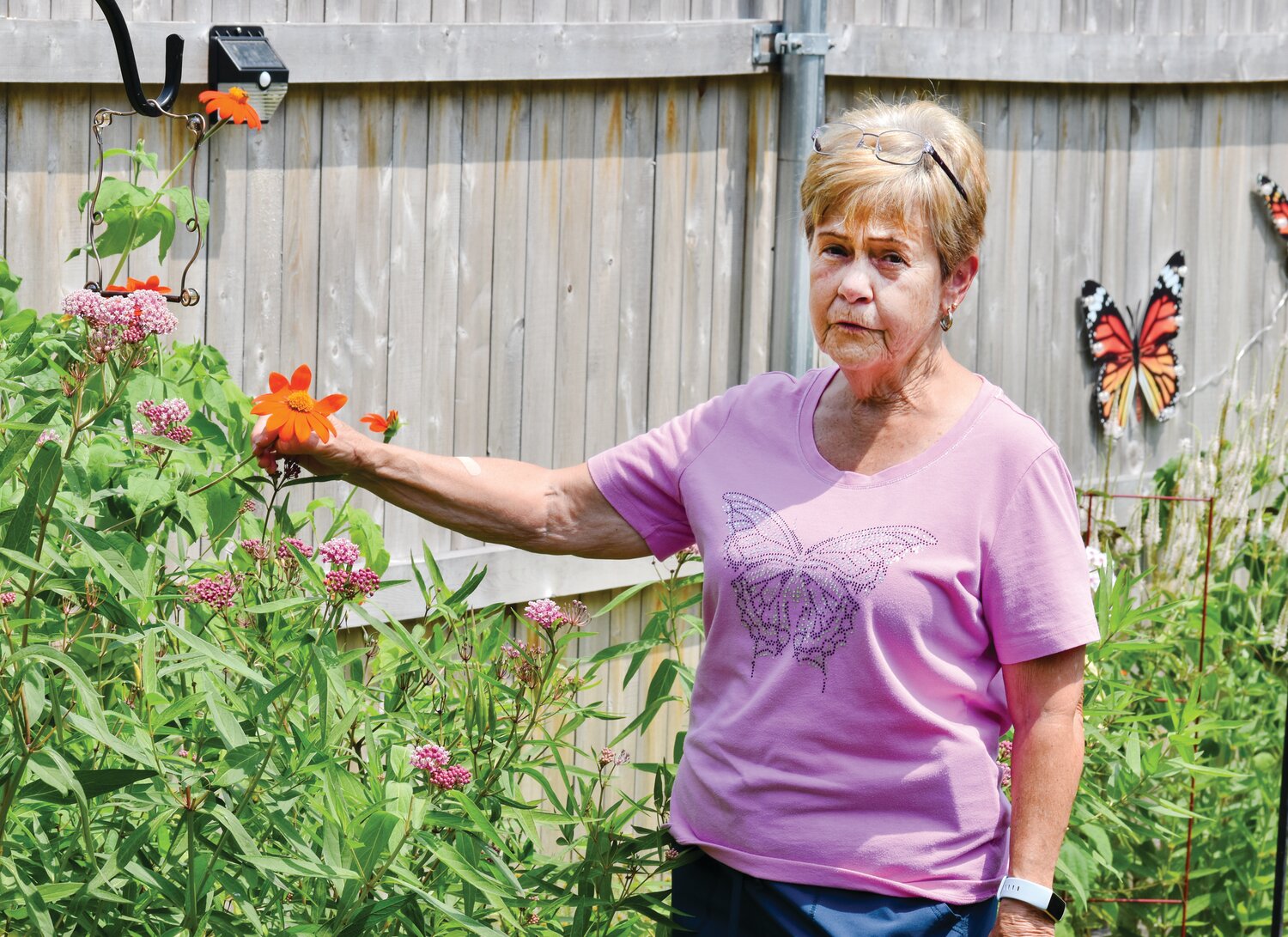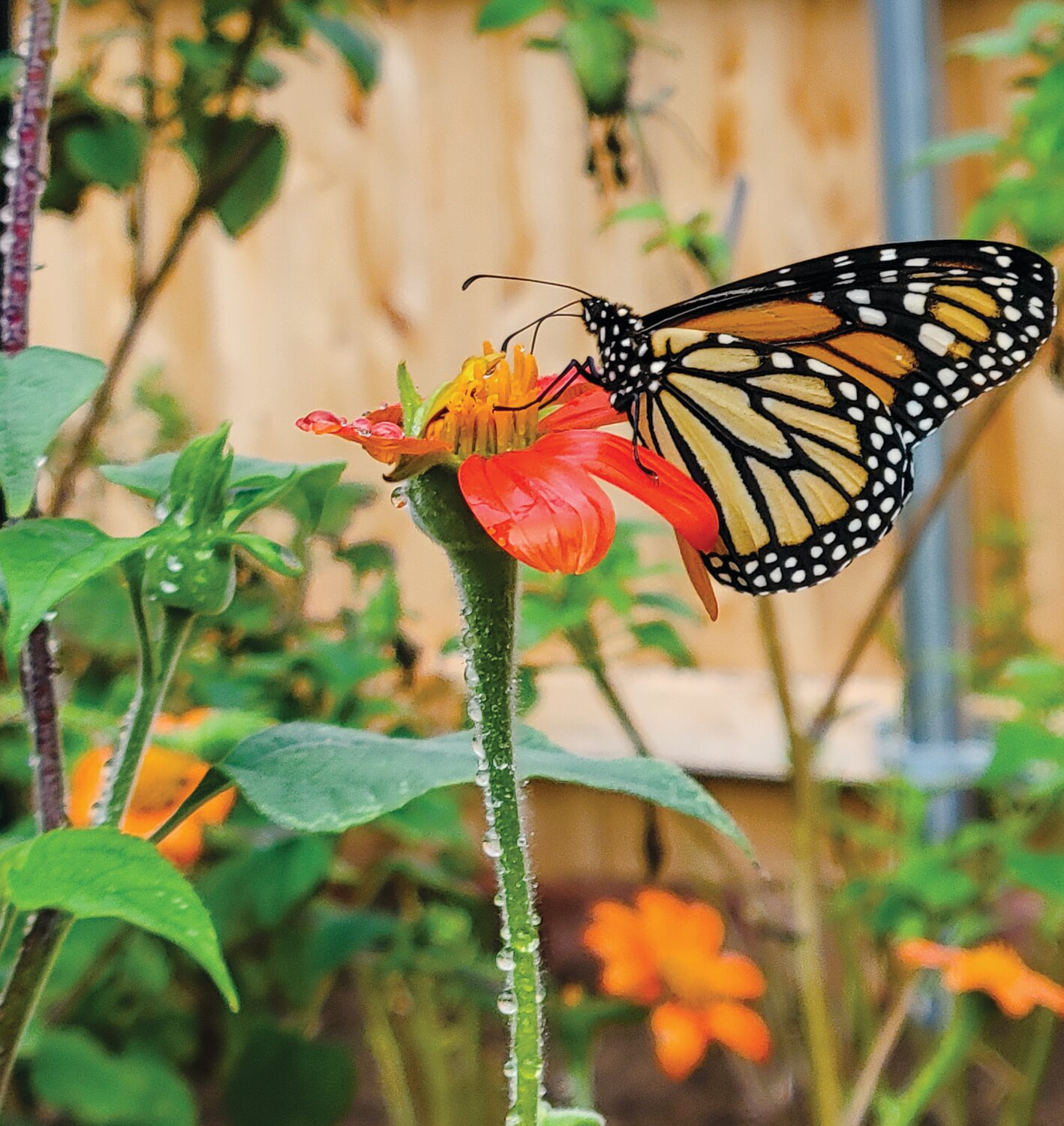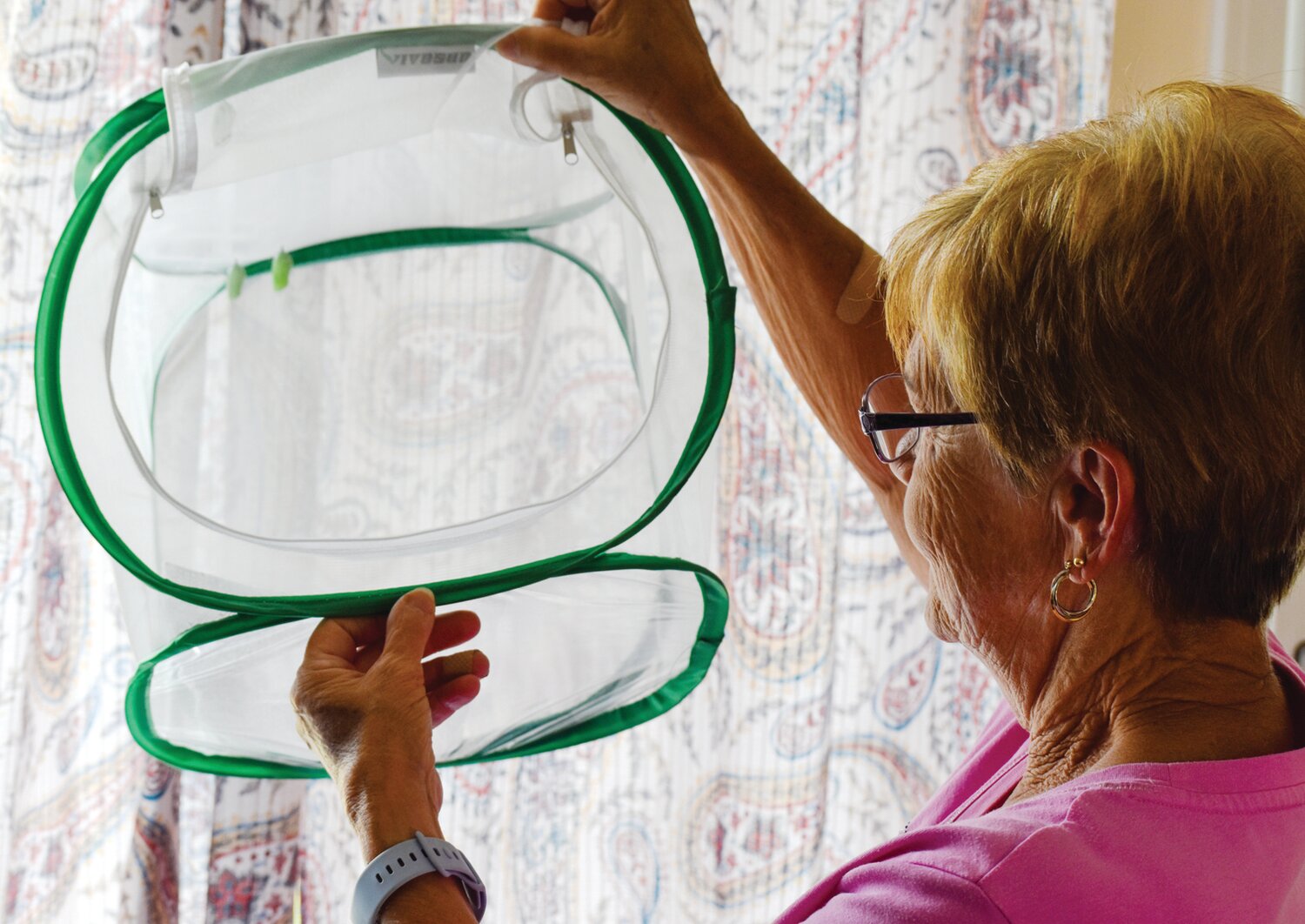Madame Butterfly
Amy Ottilige has raised and released more than 1,300 butterflies
Wearing a pink shirt with a bedazzled butterfly on the front, Amy Ottilige opened the net encasement surrounding a milkweed plant in her living room as the TV blared. She closely inspected the caterpillars, of which she has 30 at the moment, as they wiggled on all sides of the net. Three chrysalises hung from the top of an adjacent netting.
Amy Ottilige has converted her living room and backyard into a sanctuary for butterflies or what she calls “flying flowers,” including swallowtails and monarchs. She began raising butterflies in 2014 while she lived in Florida, and since then, has released more than 1,300 butterflies including about 900 monarchs.
“How can you not be connected to the babies that are growing?” she said, looking at the caterpillars. “They grow and then they fly off. It’s an emotional thing when you realize you’ve done something rewarding.”
Her passion for all things butterfly began when she underwent neck surgery and was eager to find a new hobby. She could not physically draw, which was something she loved to do. She said she remembered watching the butterflies out her window and was “thrilled with the monarchs.”
It all started with one pot of milkweed, and by the time they moved back to Rhode Island in September of 2020, the garden covered the full length of the back of the house. She said she also used her “lanai as a butterfly lab.”
“It kept getting bigger and bigger,” she added. She smiled when she said she got her neighbors involved. Her church in Florida even planted the flowers and milkweed that butterflies enjoy.
Jack Ottilege, her husband of 47, said that “the more she got into it, the more excited she became.” He recalled how the garden slowly grew over time.
“Everything I learned about butterflies, I learned from her,” he added with a laugh.
The pair moved around due to Jack’s military career, and Amy Ottilige took on many different jobs through the military. She recalled working in a law office in Munich and at the Newport Naval Base. She said that the most interesting job was for the Criminal Investigation Department at Fort Meade.
Jack said that Amy brings a determination to all that she does.
“When she gets into things, she has the tendency to expand into that arena,” he said. “She is a person who establishes something, gets passionate about it and makes things happen.”
Because “both of (their) homes are here,” the pair moved back to Rhode Island. Now, they live in a white house just off of West Shore Road filled with butterfly decor.
Amy brought 5 swallowtail chrysalises with her in the car as they made their way from Florida to Rhode Island. She said it “drove her son crazy.” She kept them in the dark all winter, and in spring, all 5 of them hatched.
Amy was eager to pursue her passion in Warwick, but she realized that it required some adjusting to get used to the environmental conditions. Not only is the season shorter than in Florida– in Rhode Island, it’s only 100 days, but she also “had to learn about the dirt here.”
She added that she only saw 18 butterflies in her first year in Warwick. She kept asking herself what she was doing wrong. Amy noticed that there are “all kinds of problems” like climate and air quality that negatively impact butterfly populations.
“I would like to see if I could do something because I have the passion of raising them,” she said.
Amy walked through her vibrant and blooming garden, pointing out the perennials and milkweed. When asked if she has a green thumb, she modestly replied that the “rain helps.”
Her garden surrounds a porch on both sides. On the right side, there is a flower bed in the middle with striking spots of pink and orange and a sunflower that Amy is particularly proud of. The beds along the fence also feature colorful flowers. Artistic renderings of monarch butterflies decorate the wooden fence. A flag with butterflies on it stands in the back corner. Amy displayed a grid where she meticulously recorded what she planted in each bed.
She said that she spends all of her mornings in this garden and returns many times a day if the weather is nice. She recalled one time, she “almost had a heart attack” when she saw a red-spotted purple in her own backyard. Amy excitedly scrolled through her camera roll in search of evidence of this butterfly that was very rare to be seen in Rhode Island.
“It’s an enjoyment to watch these, but you really have to be able to sit here and just feel,” Amy added. “It’s like an oasis right here where you can just release and have a cup of tea.”
“It’s where I can hide,” she added with a chuckle.
While walking through the garden, she bent over and ran her fingers along the leaves of a milkweed plant by the wooden fence.
“When I see the holes, I know caterpillars are around,” she explained, pointing out a tiny abrasion on the underside of the leaf.
Incubating eggs
She added that she harvests all of the eggs from her garden, checking the leaves of milkweed for eggs. The eggs typically hatch three days after she puts them in her “incubator”- a Tupperware with a paper towel. It then takes nine to 14 days for the caterpillar to become a chrysalis and ten to 14 days for a butterfly to emerge. She said she usually waits a few hours for their wings to dry before releasing them.
The left side of the garden features vegetables, herbs and a bee garden. She said that already, she’s brought in 80 tomatoes, so she often gives her surplus away to friends and neighbors. Amy was inspired to plant a bee garden after attending a pollinator talk at the Warwick Library.
“The strength of the pollinator population is important for our food sources and ecosystems,” she said.
“It can be as easy as you want it to be,” she said, motioning to the couple of potted plants in her bee garden. “Every little bit counts.”
The same thing applies to butterflies, she argues.
“You can take two plants of milkweed and some beautiful perennial flowers, and you’ll end up with butterflies,” she said. “It’s as simple as that.”
Now, Amy is educating and encouraging others to consider the importance of butterflies and other pollinators. She will speak at the pollinator talk hosted at Clouds Hill Museum on September 30. Her presentation will include book recommendations, information about milkweed, plant suggestions and an activity for children.
“I will do everything humanly possible to try to help (the butterflies) in the State of Rhode Island,” she added.
This year, Amy’s backyard has become an official Monarch Waystation. As a member of the Monarch Watch, she will tag the monarch butterflies that flit through her yard between Aug 16 and 19. Reading from a packet of information that the organization sent her, she explained that the migrating monarchs are expected to cross Rhode Island’s latitude during that window.
She hopes to expand her operation beyond her own backyard. On Tuesday August 1, the Warwick Commission on Historical Cemeteries was expected to approve her proposal for a pollinator garden at Brayton Cemetery.
“It is important to me to be a part of the Monarch recovery, spreading the word about the beauty and reward of having Monarchs in our environment,” she added.












